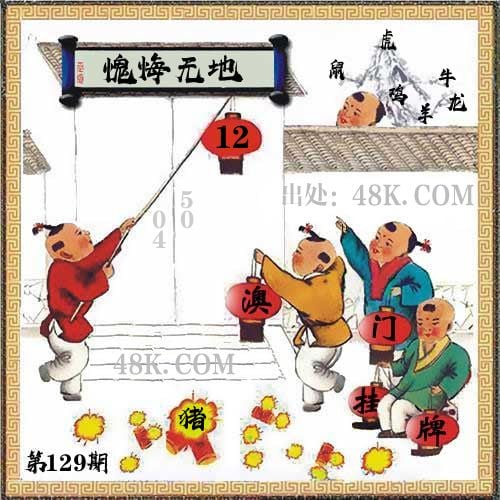2025澳门特马今晚开奖,2025澳门历史开奖记录,2025新澳门天天开好彩,2025澳门特马今晚开,2025澳门今晚开奖结果,2025澳门今晚开奖号码,2025新澳门开奖查询,2025澳门开奖结果查询,新澳2025最新资料大全,2005新澳正版免费大全,2025年新澳门天天开奖免费查询,2025天天开彩资料大全,2025澳门特马今晚开码,2025今晚澳门开奖结果,2025新澳门天天免费精准,2025新澳门天天开奖记录查询,2025澳门六今晚开奖,新澳2025精准正版免費資料,新澳门王中王100%期期中,2025新澳门天天开奖记录,2025今晚新澳开奖号码,2025澳门正版免费资料,2025年今晚澳门特马,2025年澳门天天开好彩,2025年澳门特马今晚,2025澳门今晚开特马,2025新澳门正版免费,2025澳门今晚开奖记录,2025澳门特马开奖结果,2025年新澳门特马今晚,2025今晚新澳门开奖号码,2025新澳门开码记录,2025新澳今晚开奖结果,2025新澳今晚资料,2025今晚澳门开什么码,2025新澳门精准正版免费,2025年澳门天天彩大全,2025年澳门开奖结果,2025澳门开奖记录,2025澳门开奖结果记录,新澳2025天天正版资料大全,2025精准资料免费大全,2025新澳门正版免费大全,2025新澳正版资料最新,2025澳门天天开好彩精准,澳门管家婆100%精准,2025年新澳门开奖,2025天天开彩资料大全免费,2025澳门天天开好彩精准24码,7777788888新澳门开奖结果查询,2025特马今晚开奖,2025新澳门最精准免费大全,2025澳门精准正版图库,新澳门开奖结果+开奖记录表查询,2025新澳门今晚开奖记录查询,澳门开奖结果2025开奖记录,澳门开彩开奖+结果2025开奖记录,2025澳门六今晚开奖记录 2025香港历史开奖记录,2025香港今晚开奖结果,2025香港今晚开奖记录,2025香港开奖结果记录 澳门2025精准一肖一码,2025年今晚澳门跑狗图,2025澳门挂牌正版挂牌 2025澳门资料大全免费,2025澳门资料大全正版资料免费,澳门六开彩资料查询最新料 澳门历史开奖结果记录,澳门六开彩开奖结果记录,澳门六开彩开奖结果资料查询最新 2025澳门管家婆资料正版大全,2025澳门资料九点半管家婆,香港跑狗论坛资料大全 澳门正版49图库资料免费,管家婆白小姐四肖一码期期准,13262CC马会传真论坛, 澳门凤凰四肖八码期期准,澳门六肖十八码大全全新资料,2025年澳门今晚必开一肖 6749港澳彩免费资料大全,2025澳门精准四不像,2025澳门精准四不像正版,澳门跑狗了论坛高手论坛, 2025澳门六今晚开奖结果出来,2025澳门精准正版澳门码,2025今晚澳门开彩结果,澳门今晚特马开什么号 2025年香港正版资料,2025年香港附属彩正版资料,香港2025精准资料大全,香港附属彩2025精准资料大全 2025香港历史开奖记录,2025香港附属彩历史开奖记录,香港最快最精准免费资料,香港附属彩今期开奖结果 澳门123开奖结果+开奖记录,澳门开奖结果+开奖记录2025年资料网站,4949澳门开奖结果开奖记录 626969澳门澳彩2025年,澳门626969澳彩2025年,2025年澳门正版资料有哪些,管家婆2025正版资料大全 17tkcom资料2025图片,六叔图库最全最快彩图,管家婆2025正版资料大全,2022澳门资料大全正版资料免费,管家婆一肖一码最准资料,天天彩澳门资料免费大全,澳门管家婆一码一肖中特,管家婆一码中一肖更新日期,管家婆2025新澳正版资料,澳门管家婆资料正版大全,2025新澳门002期管家婆,2025澳门资料大全正版资料免费1,管家婆精准资料大全免费,新澳门资料大全免费,管家婆一码一肖,管家婆2025正版资料免费澳门,新澳2025管家婆资料,奥门最准精选免费资料大全,很历害的刘伯温93,管家婆一肖一码资料大全,澳门正版资料免费大全精准,新澳门开奖结果2025开奖记录,2025管家婆精准免费大全,澳门天天彩最快最准资料,管家婆的资料一肖中特,新澳门彩天天开奖资料一,澳门管家婆2025资料精准大全,港澳宝典免费资料网站,管家婆免费期期精准大全 香港资料2025年资料大全,香港附属彩资料2025年资料大全,2025香港港六开奖结果今天查询 2025香港今晚开特马,香港开奖结果+开奖记录2025年资料网站,香港附属彩开奖结果+开奖记录2025年资料网站 新澳门6合和彩官网开奖,澳门最快最准的资料免费大全,4949澳门开奖结果开奖记录,澳门彩2025年今晚开奖记录查询结果,2025年新奥门天天开彩免费资料,澳门一肖一码期期准资料,澳门一码一肖一特一中管家婆,最准一肖一码100%香港78期,澳门一肖一码精准100王中王,澳门一肖一码一必中一肖,澳门最准一肖一码一码,管家婆期期四肖四码中特管家,澳门六开彩开奖结果记录,管家婆一码一肖资料,2025天天彩资料大全免费,澳门最精准免费资料大全旅游团,澳门彩开奖结果记录历史,澳门正版历史资料大全,澳门六开彩资料查询最新
港彩高手出版精料
澳门精华区
香港精华区
澳门正版资料澳门正版图库
- 澳门四不像
- 澳门传真图
- 澳门跑马图
- 新挂牌彩图
- 另版跑狗图
- 老版跑狗图
- 澳门玄机图
- 玄机妙语图
- 六麒麟透码
- 平特一肖图
- 一字解特码
- 新特码诗句
- 四不像玄机
- 小黄人幽默
- 新生活幽默
- 30码中特图
- 澳门抓码王
- 澳门天线宝
- 澳门一样发
- 曾道人暗语
- 鱼跃龙门报
- 无敌猪哥报
- 特码快递报
- 一句真言图
- 新图库禁肖
- 三怪禁肖图
- 正版通天报
- 三八婆密报
- 博彩平特报
- 七肖中特报
- 神童透码报
- 内幕特肖B
- 内幕特肖A
- 内部传真报
- 澳门牛头报
- 千手观音图
- 梦儿数码报
- 六合家宝B
- 合家中宝A
- 六合简报图
- 六合英雄报
- 澳话中有意
- 彩霸王六肖
- 马会火烧图
- 狼女侠客图
- 凤姐30码图
- 劲爆龙虎榜
- 管家婆密传
- 澳门大陆仔
- 传真八点料
- 波肖尾门报
- 红姐内幕图
- 白小姐会员
- 白小姐密报
- 澳门大陆报
- 波肖一波中
- 庄家吃码图
- 发财波局报
- 36码中特图
- 澳门男人味
- 澳门蛇蛋图
- 白小姐救世
- 周公玄机报
- 值日生肖图
- 凤凰卜封图
- 腾算策略报
- 看图抓码图
- 神奇八卦图
- 新趣味幽默
- 澳门老人报
- 澳门女财神
- 澳门青龙报
- 财神玄机报
- 内幕传真图
- 每日闲情图
- 澳门女人味
- 澳门签牌图
- 澳六合头条
- 澳门码头诗
- 澳门两肖特
- 澳门猛虎报
- 金钱豹功夫
- 看图解特码
- 今日闲情1
- 开心果先锋
- 今日闲情2
- 济公有真言
- 四组三连肖
- 金多宝传真
- 皇道吉日图
- 澳幽默猜测
- 澳门红虎图
- 澳门七星图
- 功夫早茶图
- 鬼谷子爆肖
- 观音彩码报
- 澳门不夜城
- 挂牌平特报
- 新管家婆图
- 凤凰天机图
- 赌王心水图
- 佛祖禁肖图
- 财神报料图
- 二尾四码图
- 东成西就图
- 12码中特图
- 单双中特图
- 八仙指路图
- 八仙过海图
- 正版射牌图
- 澳门孩童报
- 通天报解码
- 澳门熊出没
- 铁板神算图
澳门正版资料人气超高好料
澳门正版资料免费资料大全
- 杀料专区
- 独家资料
- 独家九肖
- 高手九肖
- 澳门六肖
- 澳门三肖
- 云楚官人
- 富奇秦准
- 竹影梅花
- 西门庆料
- 皇帝猛料
- 旺角传真
- 福星金牌
- 官方独家
- 贵宾准料
- 旺角好料
- 发财精料
- 创富好料
- 水果高手
- 澳门中彩
- 澳门来料
- 王中王料
- 六合财神
- 六合皇料
- 葡京赌侠
- 大刀皇料
- 四柱预测
- 东方心经
- 特码玄机
- 小龙人料
- 水果奶奶
- 澳门高手
- 心水资料
- 宝宝高手
- 18点来料
- 澳门好彩
- 刘伯温料
- 官方供料
- 天下精英
- 金明世家
- 澳门官方
- 彩券公司
- 凤凰马经
- 各坛精料
- 特区天顺
- 博发世家
- 高手杀料
- 蓝月亮料
- 十虎权威
- 彩坛至尊
- 传真內幕
- 任我发料
- 澳门赌圣
- 镇坛之宝
- 精料赌圣
- 彩票心水
- 曾氏集团
- 白姐信息
- 曾女士料
- 满堂红网
- 彩票赢家
- 澳门原创
- 黃大仙料
- 原创猛料
- 各坛高手
- 高手猛料
- 外站精料
- 平肖平码
- 澳门彩票
- 马会绝杀
- 金多宝网
- 鬼谷子网
- 管家婆网
- 曾道原创
- 白姐最准
- 赛马会料










